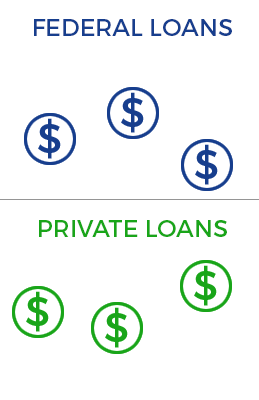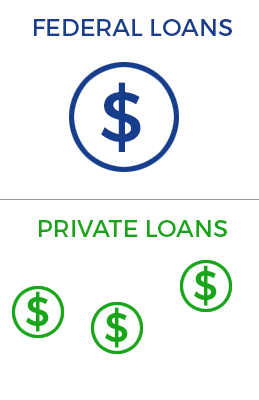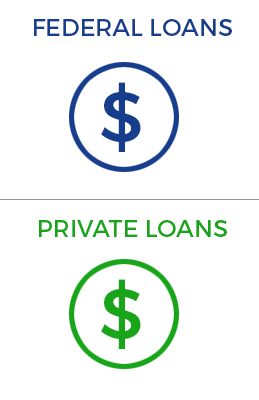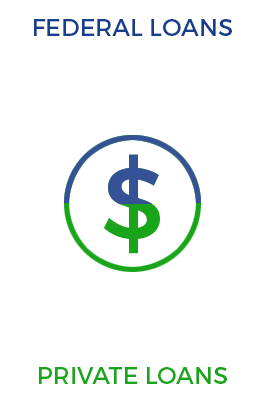 Going to medical school can be one of the best decisions of a student’s life.
Going to medical school can be one of the best decisions of a student’s life.
Although it is generally competitive and sometimes stressful, the outcome is generally a good one. Medical school is associated with most of the highest-earning professions in the country. But it is also associated with having a lot of student loan debt.
It’s not uncommon for a new doctor to accumulate $300,000-500,000 in debt from both undergraduate studies and a medical degree.
Your student loans can be a huge source of anxiety. However, there are a number of options available for medical school graduates to help deal with student loan debt.
From student loan forgiveness to assistance and refinancing, doctors can often save tens–or hundreds–of thousands of dollars on their loans by understanding their options and making smart decisions about how to deal with their debt.
Managing your student loan payments
With such high debt loads, it’s not uncommon for new doctors to have student loan payments in excess of $2,000 per month.
Although this isn’t necessarily un-manageable for some doctors, the amount is still high and can likely be reduced to save money each month and over the life of the loans. This can be hugely helpful as new doctors will also have many other new expenses, including beginning to save for retirement and possibly starting a family.
So, what can a physician do to manage their student loan payments?
Here are some steps to investigate:
1. Student loan forgiveness options
The best-case scenario is that your student loans just vanish, right? Well, that’s not exactly how student loan forgiveness programs work. But, it is possible for physicians to qualify to have a significant portion of their education debt eliminated.
You’ll likely want to first investigate these options, as qualifying for forgiveness would likely change the steps that you take to take control of your loans.

2. Student loan assistance programs
Although not technically the same thing as a forgiveness program, there are also a number of state and federal loan assistance programs. Many of these offer grants to physicians who meet certain criteria, which can be used to help pay off student loan debt.
Although few of these programs offer “complete” assistance, some programs offer $200,000 or more in funds to help pay off student loans.
As a second step, these programs may help you significantly reduce the amount you’ll have to pay out of pocket.
3. Income-based repayment programs
With or without student loan assistance, many physicians may want to shift the terms of their student loans to be based on a percentage of their income rather than a flat monthly payment.
This can be especially advantageous for young doctors who may not be earning as much as they expect to earn later in their career.
Doctors will want to consider this option as a way to reduce monthly expenses and possibly lower the total amount they’ll need to pay on their loans before qualifying for forgiveness or loan assistance later down the road.
4. Refinance and consolidation options
Even with all of the available assistance for doctors, it’s still often necessary for physicians to consider student loan refinance and consolidation options.
Because programs like PSLF are only applicable for federal loans, consolidation and refinance options can also allow doctors to reduce the costs of any private student loans or even combine all of their loans (both federal and private) into a single monthly payment.
It may also substantially reduce a physician’s monthly student loan payments–and lifetime costs–to refinance at a lower interest rate. For a doctor with a student loan debt of $250,000 or $300,000, even a reduction of just 1% in interest amounts to a substantial saving–more than $15,000 over 10 years.
Student loan forgiveness for doctors
The first thing you’ll want to consider when evaluating your student loan options is what forgiveness or assistance programs are available to help reduce the amount you’ll have to pay.
It turns out that these kinds of assistance and forgiveness programs can save doctors tens of thousands of dollars on their loans, and in some cases, up to $200,000 or more.
Of course, not every physician will qualify for these programs. Many require service within certain areas or for certain approved employers and may require a lower salary than what one would generally expect to earn.
Even so, taking the time to evaluate your options is time well spent.
Public Service Loan Forgiveness (PSLF)
The U.S. Department of Education offers Public Service Loan Forgiveness to graduates working for approved non-profit or government organizations.
After a period of 10 years (120 qualifying payments), the borrower’s remaining federal student loan balance can become eligible for forgiveness.
This program only applies to funds borrowed through the U.S. Department of Education (e.g., Federal Direct loans, PLUS loans, etc) and only funds borrowed to the student (not their parent) will be considered eligible for forgiveness. Private student loans do not qualify.
Pursuing loan forgiveness can be a smart move, but it does take careful planning and consideration to be sure that your career path will qualify you for the program.
Many students who choose to work in the public sector generally earn less money than those in the private sector, which means that many students also choose to enroll in an income-based repayment plan on their federal loans, allowing them to lower their monthly payment and ultimately receive loan forgiveness after 10 years.
State and federal loan assistance
You want loan assistance? You’ve got it.
There are more than 60 federal and state-run student loan assistance programs for doctors. Most of these programs come with certain criteria you’ll need to meet in order to be eligible. But, these programs range from scholarships and grants to repayment assistance and loan forgiveness based on your work as a doctor.
Here are some examples of the programs available:
Michigan State Loan Repayment Program (MSLRP)
Medical professionals working in Health Professional Shortage Areas for an approved non-profit organization are eligible for this student loan repayment assistance program. Eligible doctors will need to be employed full time for a period of two years and commit to working an additional two years in order to qualify.
Recipients can be granted up to $200,000 in tax-free funds to repay educational loans over an 8-year period.
Learn more about the Michigan State Loan Repayment Program
Minnesota Urban Physician Loan Forgiveness Program
Through this program, doctors can receive an award of up to $25,000 per year for 4 years or $100,000 in total for repayment on their educational loans.
Physicians planning to practice primary care medicine in an underserved urban area are eligible to receive funds and can apply either while actively practicing or during their final year of residency training.
Learn more about the Minnesota Urban Physician Loan Forgiveness Program
Student loan consolidation/refinance options for doctors
Another smart move for many doctors is to investigate student loan refinance and consolidation.
There are multiple ways to approach this step, and the one that is right for you will depend on a number of factors about your current loans and your future plans.
Some things to consider when evaluating refinance/consolidation options:
- Total student loan debt
- Current interest rate(s)
- Lender makeup (private, federal)
- Forgiveness/assistance eligibility (see above)
Once you’ve taken stock of your current situation, you ultimately have four ways to approach consolidation/refinance.
1. Do not refinance or consolidate at all
 Chances are pretty good that this option is not the right one. At the very minimum, you could likely benefit from consolidating your federal loans (a simple step with no credit check or anything else required.)
Chances are pretty good that this option is not the right one. At the very minimum, you could likely benefit from consolidating your federal loans (a simple step with no credit check or anything else required.)
If you choose to take no action, then you’ll likely be paying multiple separate student loan bills each month and you could be leaving tons of money on the table by not exploring other options to refinance.
2. Just consolidate federal loans
 Regardless of if you pursue refinancing through a private lender, most doctors should at least take the step to consolidate their federal loans into a single payment.
Regardless of if you pursue refinancing through a private lender, most doctors should at least take the step to consolidate their federal loans into a single payment.
This won’t change your monthly payment on its own. Your interest rate will be equal to a weighted average of the rate you were paying on your original loans. But, it will simplify your life by putting everything you owe the U.S. Dept of Ed into a single loan. Depending on your other options, it could also qualify you for a longer repayment period on these loans. That means you could lower your monthly payment based on the longer term.
Note that doing this will also mean paying more interest over time. But, depending on your other options, it may be a smart move.
3. Consolidate federal loans and refinance private loans
 If you consolidate your federal loans, then you may also want to refinance your private loans into a single amount.
If you consolidate your federal loans, then you may also want to refinance your private loans into a single amount.
Refinancing your outstanding private student loans can offer some benefits, such as:
- Simplifying your payments
- Adding or removing a cosigner
- Securing a better rate
- Extending or reducing repayment terms
Any time you’re borrowing from a private lender, you’ll need to go through a more-traditional credit check process. It’s also possible that you may need a cosigner.
4. Consolidate and refinance all loans into one
 One final option for doctors is to simply refinance all of their student loan debt into one single loan. While this option may not be right for everyone, there are some upsides to doing so. It simplifies your bills even further or saves money on interest if your federal rates are higher than market rates.
One final option for doctors is to simply refinance all of their student loan debt into one single loan. While this option may not be right for everyone, there are some upsides to doing so. It simplifies your bills even further or saves money on interest if your federal rates are higher than market rates.
If you do so, you will lose eligibility for some federal loan protections, such as forbearance or deferment. But, many private lenders offer some protections as well, including unemployment and hardship protection. It would allow you to stop making payments for a period of time.
There are a few main reasons that most people choose to refinance through a private lender. Borrowers are often able to receive better interest rates (based on your creditworthiness, versus federal loans which have a set national rate for all borrowers) and flexible repayment terms. Some lenders allow you to choose the duration of your loan to a precise number of months, rather than having to choose from a pre-defined number of years.


